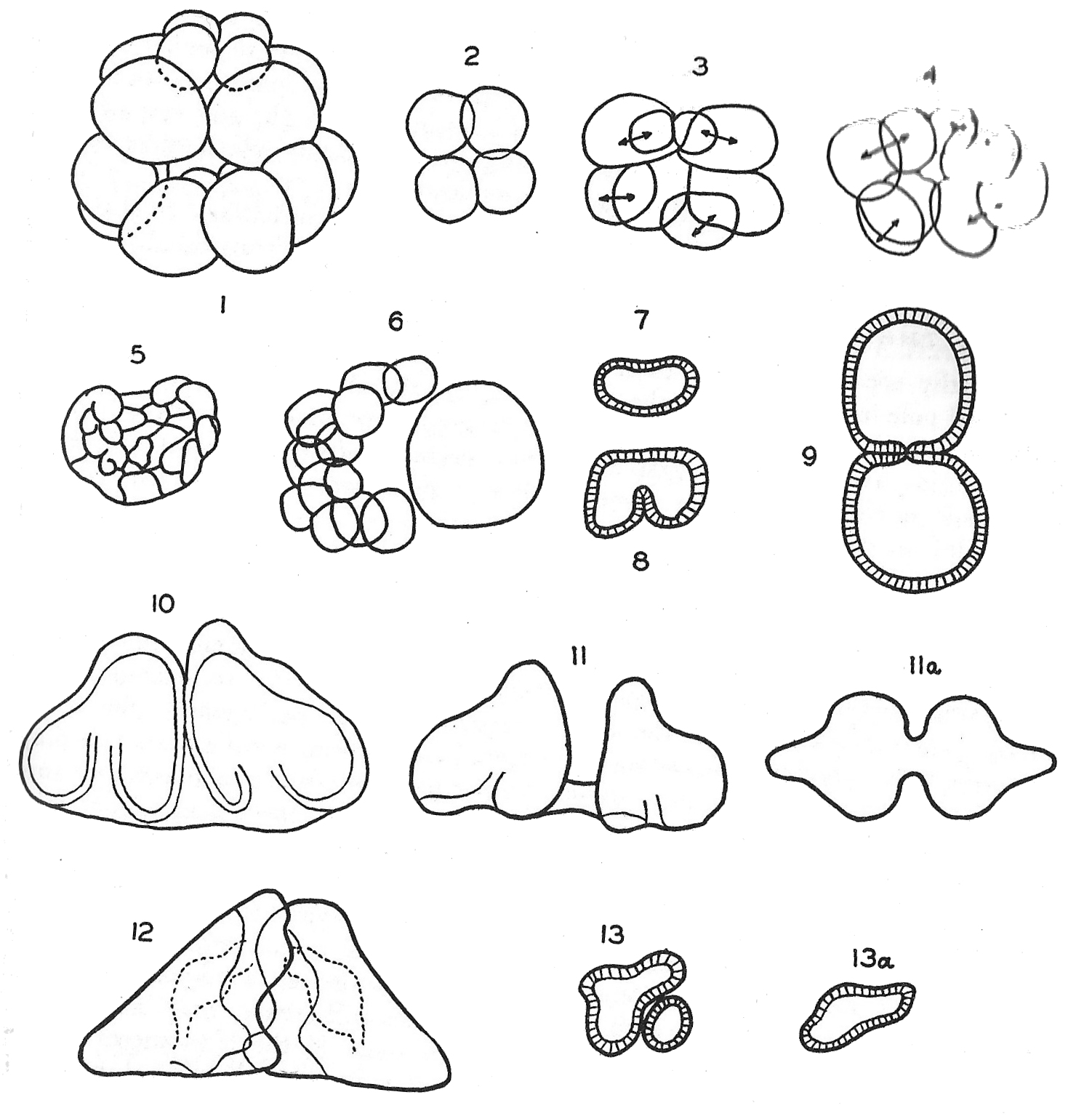
Hans Driesch experiment on Sea Urchins (1902)
Hans
Driesch tested Wilhelm Roux's theory of
development, with sea urchins instead of frogs.
Instead of destroying one blastomere, he agitated sea urchin
embryos at the two- & four-cell stage until they
disassociated into separate cells. Each cell developed as a
complete larval sea urchin, somewhat smaller than normal. This
Driesch took as evidence for a totipotent or pluripotent
capacity of embryonic cells, meaning that each cell retained
the capacity to develop normally. . In
Driesch's interpretation, this implied that development
was a consequence of external factors
operating on the cells. This conclusion was opposite to that
of Roux, who argued that development was the manifestation of
internal properties.
At the latter blastula stage of development, Driesch showed that separation of the upper ('animal') from the lower ('vegetal') halves allowed the 'animal' portion to development substantially to maturity, whereas the 'vegetal' half remained essentially undifferentiated.
HOMEWORK: Note that this experiment took place after the re-discovery of Mendel's genetics. Contrast 'retained the capacity" with "retained all the information necessary ...."
At the latter blastula stage of development, Driesch showed that separation of the upper ('animal') from the lower ('vegetal') halves allowed the 'animal' portion to development substantially to maturity, whereas the 'vegetal' half remained essentially undifferentiated.
HOMEWORK: Note that this experiment took place after the re-discovery of Mendel's genetics. Contrast 'retained the capacity" with "retained all the information necessary ...."
Text material © 2021 by Steven M. Carr